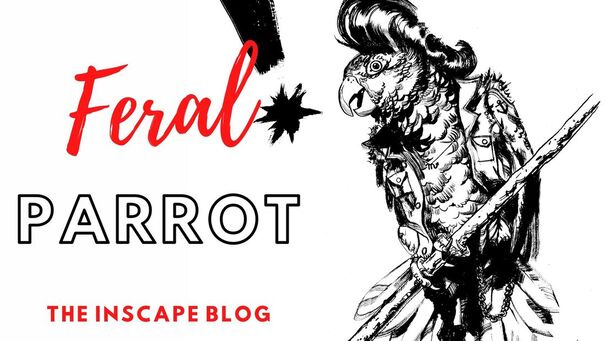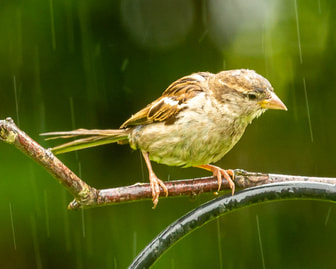- Folio No. 9
- About
- Feral Parrot : The Blog
- INTERVIEWS
- SUBMISSIONS
-
ISSUE ARCHIVE
- PRINT Chapbook No.6 Healing Arts
- Online Issue No.9
- Online Issue No.1 Fall 2016
- Online Issue No.2 Spring 2017
- ONLINE Issue No.3 Fall 2017
- PRINT Vol 72 No 2 Fall 2017
- PRINT Vol 73 No.1 Fall 2018
- ONLINE Issue No. 4 Fall 2018
- Online Issue No.5 Summer 2018
- FOLIO No.1 Fall 2018 VOTE
- ONLINE Issue No.6 Fall 2018 Fall Spirituality
- FOLIO 2 Fall 2019 Celebrating Dia De Los Muertos
- FOLIO No.3 -- Moon Moon Spring 2019
- FOLIO No.4 Celebrating New PCC Writers
- FOLIO No.5 City of Redemption
- FOLIO No.6 Spring 2020
- FOLIO No. 7 - Winter 2021 Into the Forest
- 2022 Handley Awards
- Inscape Alumni Board
- PRINT Chapbook No. 7 Healing Arts
- Blog
- Untitled
Written by Sean Ban“Be There Two,” by Maggie Mosher, appears in the Fall 2018 Spirituality online issue of PCC Inscape. As an aspiring poet and writer, I’ve been told that reading other pieces of work would help you figure out your writing style. Unsure of where to start my search for other pieces (as I’ve mostly been busy and/or distracted by other mediums of entertainment), I found myself pursuing a writing certificate and joining the PCC Inscape staff for experience. With this, I’ve been able to access a plethora of many works, from poetry to stories. The website itself has a few issues posted online, which I’ve had the privilege of going through, looking for a good piece to write about. While looking through the spirituality issue (since I would consider myself an agnostic man, looking for something to expand my view of spirituality), I’ve stumbled across a very interesting poem, “Be There Two.” At a first glance, the thing that stood out to me visually in “Be There Two” was the unusual structure of the poem. It doesn’t look like a poem you would often see: separated blocks of text with four or five lines within each block. Instead, this poem wraps off to the right, straying far from the left side of the page, inching closer to the right. This gives the image of slopes going down the words. The first stanza of the poem is another feature that drew me in, and it reads: Remind me Of the song Of the sparrows At Spring’s first inhale, Of the dew which covers the earth And the swell of rain ready to fill Their opened beaks, Cleanse their feathers, As they look on, Shivering with delight In the still. This stanza already filled my mind with an image of spring, where nature is waking up right after a winter. The line “and the swell of rain ready to fill/ Their opened beaks/ Cleanse their feathers” puts in a setting of a rainy start to the spring, signaling a beginning by having the sparrows cleaning themselves off of their old selves and by accepting the new water brought by rain. The rest of the stanzas follow the same structure (save for a few lines, since they offer more words, but they complete the line they’re in), and the poem gets shorter and shorter towards the end. They all start off with the line “Remind me,” which invokes a feeling of the narrator’s nostalgia, which follow up with great imagery, from “the swell of the rain ready to fill/ Their opened beaks,/ Cleanse their feathers” to “The snow that tucks the earth/ To a lullabied sleep/ And the hearths within dwellings/ Which crackle and glisten/ Warming fingers to hearts.” The poem's outline of a typical year can be clearly seen, starting from spring to winter, forming a cyclical nature as every season is birthed from its predecessor. Within each stanza, you can picture the snapshots that are presented, like with the Tom Cat’s “purr [as it] joins the rhythm of the earth” and “the branches/ Of an old Sugar Maple/ [...] reaching [...]/ To touch the Heavens.” I believe that this poem was accepted because of the powerful imagery it manages to create. The piece humanizes nature to the point where the poem can actually make us personify with each season. It makes the reader question their place in the world, just as I had while reading it. I believe that this poem helps its reader forget about the negativity in the world, just for a moment. It offers an escape to a lush landscape, ready to experience all it can in a cyclical year. To me, this poem has a strong connection to nature, which I believe many of us seem to have forgotten due to living in a city. It brings an idea of a simpler time; one that is calm and free of mental anguish. The narrator expresses the same notion in the fifth stanza, with the lines “Of times past/ Which nestle into the confines/ Of this weary mind/ Longing to be retrieved.” This idea is something that I know I yearn for, having been in a city full of concrete buildings and metal vehicles. While I do go to parks looking for that small connection, I feel that it’s not enough for me. That’s why I feel drawn to this poem. It can lift my soul, even if it was a small uplift, and I’m grateful to have come across it. As the final stanza of the poem says, “Remind me/ Lest I forget,” I implore you, the reader, to do so and may you never forget the beauty of the past and of nature. Sean Ban is an aspiring writer and poet that hopes to make the world think a bit more critically. He states: "I'm hoping to take my experiences and turn them into stories that people would be interested in hearing. There are so many things happening around us, yet only a few people actually turn those experiences into personal reflections."
0 Comments
Leave a Reply. |
IMPORTANT NOTE:
PCC Inscape Magazine, housed at Pasadena City College, is following Coronavirus protocols. At this time our staff continues to read submissions and publish web content. Note:
Blog Posts reflect the opinions of the writer and not the opinions of Pasadena City College or Inscape Magazine Editorial Staff Members. Archives
December 2023
Categories
All
|



 RSS Feed
RSS Feed